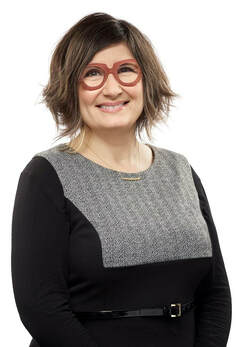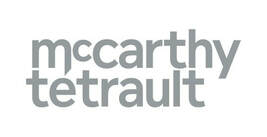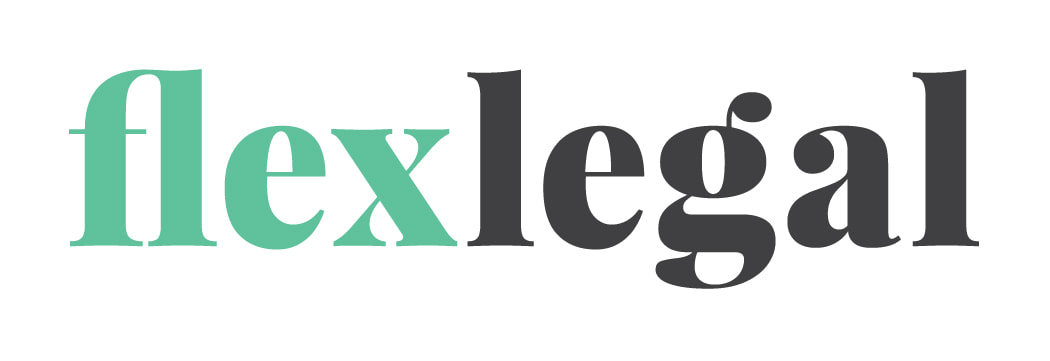 How does one of the largest law firms in Canada address and advance equity, diversity and inclusion? I reached out to Nikki Gershbain, McCarthy Tétrault's Senior Director, Inclusion and Community Engagement, to find out: 1. Almost all law firms have an equity, diversity and inclusion policy or commitment on their website. What does EDI mean to your firm and is improving EDI a priority? For McCarthy Tétrault, EDI means taking the obligatory commitment that can be found, as you note, on every firm’s website, and turning it into concrete and meaningful action for our people on the ground. It’s not only a priority for our firm, it’s one of our five strategic pillars. At McCarthy Tétrault we’re focussed on diversity, but even more so on inclusion. Inclusion goes beyond representation in an effort to identify and eliminate unconscious biases, creating programs and policies designed to set diverse lawyers up for success, and creating spaces where everyone can bring their whole selves to the workplace. For us, EDI is more than just a head count. As EDI expert Verna Myers has now famously written, “diversity is being invited to the party, inclusion is being asked to dance.” Importantly, what inclusion is not is reverse discrimination. This can’t be said enough. The kind of efforts I’m describing and that our firm is promoting don’t create an unfair advantage for some groups – they simply level the playing field for others. As part of the EDI movement, we need to dispel myths that continue to persist, despite clear evidence that diverse lawyers can face significant barriers to success within the legal profession. We need to drive home the message that merit and inclusivity are two sides of the same coin. Finally, true EDI requires leadership from the top of the house. While diversity and inclusion have been longstanding priorities of McCarthy Tétrault, late last year our CEO Dave Leonard kicked off a renewed and robust internal dialogue that has, within a short period of time, elevated and prioritised these discussions. Leadership matters. 2. What steps (or initiatives) has your firm taken to address and improve EDI? McCarthy Tétrault has always been committed to EDI. We were the first Canadian law firm to appoint a Chief Inclusion Officer, and one of the first to establish a National Inclusion Committee. In recent years, we’ve focused on creating leadership opportunities for women: today, 45% of our senior leadership team and 40% of our board members are women, as well as 43% of our lawyers. Elevating large numbers of women into senior governance roles has put gender issues front and centre at the firm, and has set an example for our women lawyers, who see visible evidence of the fact that they can aspire to positions of leadership at the firm. Some of the many programs and policies we currently have in place to put our values into action include bias-free recruitment policies, work allocation programs, support for parents and nursing mothers, mental health leadership, flexible work arrangements, and firm-wide anti-harassment training. Associates can also take up to one year of parental leave without impacting their salary level or partnership eligibility. These programs have led to our status as one of Canada’s Best Diversity Employers, seven years running. We’re one of just a handful of law firms in the country to currently hold this distinction. While we are proud of our progress, we know there’s more to be done. That’s why McCarthy Tétrault recently created my role – Senior Director, Inclusion and Community Engagement – and launched an innovative, firm-wide program called “Inclusion Now”. The first program we announced under the Inclusion Now banner was outward-looking: a five year, $5M gift to United Way to support members of five equity-seeking groups: women, members of the LGBTQ2S community, Indigenous people, newcomers, and people living with disabilities. We know that poverty is exacerbated by other vulnerabilities, so by targeting our investment to programs serving these communities, we hope to deepen the impact of our giving. We also plan to follow-up this financial gift with the gift of our time, by providing pro bono services to clients of the agencies we’re working with. Scotia Bank recently announced a United Way gift modelled after this approach, and we hope to see more corporate donors follow suit. Turning inward, I’m currently in the process of developing a firm-wide strategy to build on our existing efforts, create new programs and policies to achieve our EDI goals, and ensure that the values of diversity, inclusion and social responsibility inform every aspect of who we are as a firm, and what we do. In short: I have the best job ever! 3. Which initiative has been the most successful and why? I can think of a few! Our work allocation program, which we’ve rolled out in several of our largest practice groups across the country, ensures that our associates have access to great work and career-enhancing professional opportunities. We all fall prey to affinity bias – human beings are naturally drawn to people who are “like us”. In a large law firm-setting, work is distributed by more senior, and therefore a more homogeneous group of, lawyers. In this kind of environment, unintentional bias can impact a young associate’s career. We are proud of this program and have plans to continue to roll it out more broadly across the firm. Lawyers work extremely hard. It’s a career and lifestyle we’ve freely chosen. But for young parents of any gender, the challenges of managing a law practice while raising young kids can lead to enormous career pressure. In order to make this balancing act easier, McCarthy Tétrault’s parental support program offers executive coaching, a maternity leave buddy program, internal "baby rooms", emergency daycare support and reimbursement for nursing parents who need to travel with a caregiver. Most recently, we launched our inaugural “Inclusion Now Awards”. Fifty four members of our firm – students, associates, counsel, partners and employees – were nominated by their peers for the many ways they serve as diversity and inclusion champions in their workplaces and communities. We celebrated ten winners, two per office, by bringing the entire firm together via video conference. Our CEO and Regional Managing Partners hosted the event, and the turn-out and energy in each of our offices was remarkable. By publicly recognizing our colleagues for their EDI efforts, we hope to encourage others to step up. 4. Which initiative was the least successful (what's not working) and why? We’ve never launched a program that wasn’t successful at some level – each effort we’ve made to promote EDI has achieved a certain element of traction. The question I’m asking right now is not “how do we design successful EDI programs”, but rather, “what EDI programs will have the greatest impact”. The truth is, how to make genuine progress isn’t a huge mystery – there is no shortage of credible studies and reports that tell us how we can move the dial to increase the representation of women, lawyers of colour, LGBTQ lawyers etc. The path is there, we simply have to have the desire to take it. 5. What is your goal? What do you hope to achieve through your EDI-focused actions? We have many goals, but let me touch on three. First and foremost, our goal is to help create a culture that works for our diverse students, lawyers and staff. We want folks to choose to build their careers at McCarthy Tétrault, and when they get here we want them to have the same opportunities as everyone else to achieve their full potential. In short, we want diverse people to thrive in our workplace. Second, we want to engage all members of our firm to support these goals, even those who don’t feel personally affected by the issues. That’s why I’ve spent the last four months meeting with dozens of associates, partners and staff, and it’s why I’m working on a strategy that creates opportunities for everyone to actively engage with these issues, and incentives for doing so. Third, we’d like to see this work have an impact on the profession more broadly. While it’s always exciting to feel like you’re on the leading edge of something important and innovative, it’s even more exciting to know you’ve contributed to systemic change. McCarthy Tétrault has an opportunity not only to find new and innovative ways to support, nurture and advance diverse talent at our firm, but to contribute to change for all lawyers. Thank you Nikki for taking the time to answer these questions and for giving us an insight into your firm's initiatives and goals. ICYMI, previous posts have featured Casey & Moss LLP and Lerners LLP. Stay tuned for the next post soon. Sign up to have these profiles sent directly to your email address!
The idea for this series surfaced last year when I attended a women lawyers conference where the conversation quickly turned to criticizing and calling out law firms for not doing enough to make a positive change. The conversation went on for quite some time with example after example of all that is wrong with law firms. While the criticism may have been warranted, unfortunately, no one talked about possible solutions. . . . . .So with this blog series I wanted to reach out to law firms and find out what they are doing to advance EDI in their firms. Are they doing anything? What is working? What isn't? What is the end-goal? How do they measure "success"? The posts include a set of five questions that each firm will answer. My simple goal is to start a conversation, find out what is happening in this area in law firms across Canada, and perhaps we can all learn from each other.
0 Comments
Your comment will be posted after it is approved.
Leave a Reply. |
Erin C. Cowling is a former freelance lawyer, entrepreneur, business and career consultant, speaker, writer and CEO and Founder of Flex Legal Network Inc., a network of freelance lawyers.
Categories
All
Archives
June 2024
|
|
(C) 2014-2024 Cowling Legal. All rights reserved.
|
Please note I am not currently practicing law.
Information on this website does not constitute legal advice and is for informational purposes only. Accessing or using this website does not create a solicitor-client relationship. See website Terms of Use/Privacy Policy. |








 RSS Feed
RSS Feed
